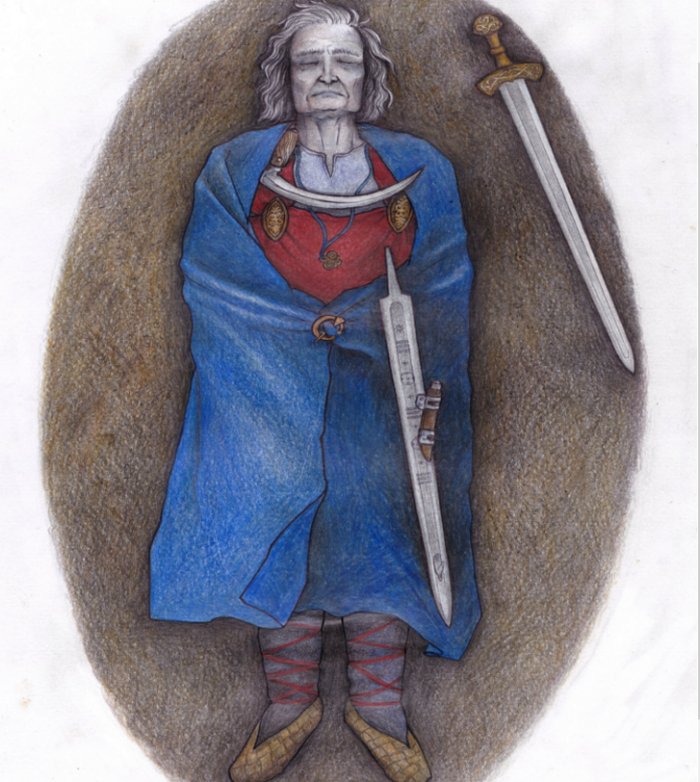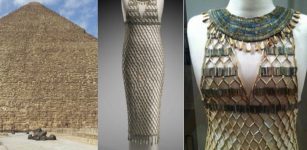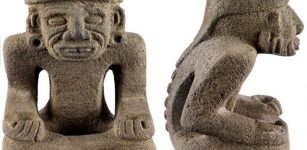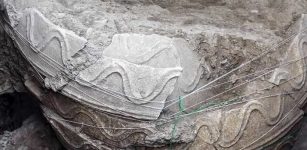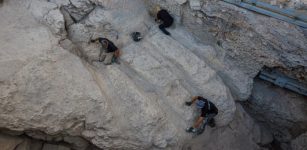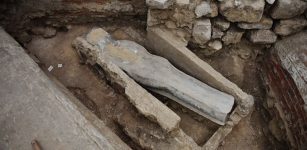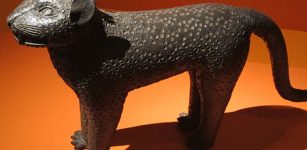Suontaka Weapon Grave: New Light On Strong Female Leaders And Warriors Of Late Iron Age Finland
Conny Waters - AncientPages.com - In 1968, a weapon grave with brooches was found at Suontaka Vesitorninmäki, in the south of Finland. Suontaka village is located in a historical province of Häme, known for its numerous sword-findings and archaeological sites.
The time during which the sword was in use was a prosperous yet violent time in the Häme region. Since then, the grave has been interpreted as evidence of powerful women, even female warriors, and leaders in early medieval Finland.
Not all accepted this possibility of a woman buried with a sword and tried to explain it as a double burial.
Now, researchers made an analysis of the grave, including an examination of its context, a soil sample analysis for microremains, and an aDNA analysis.
The result of this study proposes another interpretation suggesting that the Suontaka grave possibly belonged to an individual with sex-chromosomal aneuploidy XXY. One thing is now known for sure:
The context of the grave indicates that it was a respected person whose gender identity may well have been non-binary.
The jewelry inside the grave indicates that the buried individual was dressed in typical female clothing of the period. On the other hand, the person was buried with a sword—possibly two, according to some interpretations—which is often associated with masculinity.
Over the decades, the Suontaka grave has been considered to be either a double burial of both a woman and a man, or alternatively, a weapon grave of a female, and therefore a proof of strong female leaders or even female warriors in the Late Iron Age Finland.
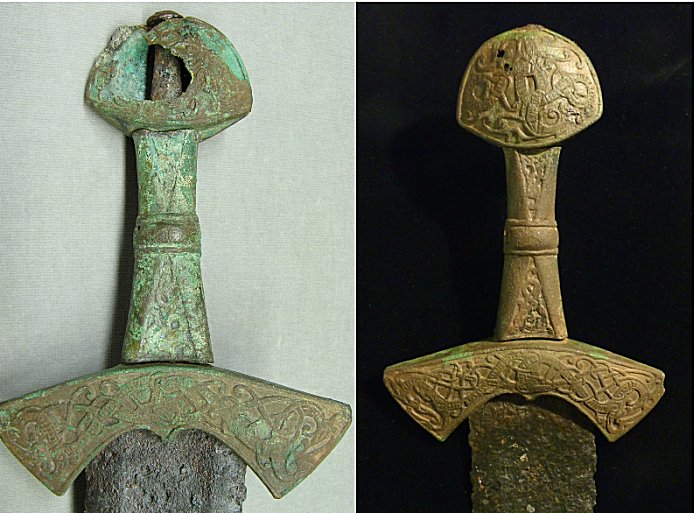 Double-edged iron sword, bronze handle. The tip of the sword is corroded by rust, so the preserve has apparently been slightly longer at first. It is 6 cm wide at the handle end and tapers towards the tip. The bronze handle of the sword has a unique shape. In a flat, slightly convex side pony, the upper edge is strongly curved, the lower edge is more gentle. It is 6.3 cm wide and 5.0 cm high. The handle's 8.1 cm long handle is triangular, widening at the ends. In the middle is a convex, belt-like thickening, equipped with embossed edges. The dodge, length 12.9 cm, is convex-sided like a pony. Image credit: Finna.fi
Double-edged iron sword, bronze handle. The tip of the sword is corroded by rust, so the preserve has apparently been slightly longer at first. It is 6 cm wide at the handle end and tapers towards the tip. The bronze handle of the sword has a unique shape. In a flat, slightly convex side pony, the upper edge is strongly curved, the lower edge is more gentle. It is 6.3 cm wide and 5.0 cm high. The handle's 8.1 cm long handle is triangular, widening at the ends. In the middle is a convex, belt-like thickening, equipped with embossed edges. The dodge, length 12.9 cm, is convex-sided like a pony. Image credit: Finna.fi
However, a newly published study challenges both views, because only one person had been buried in the grave, and that the person was wearing typical feminine clothes of the period and had a hiltless sword placed on their left hip.
"The buried individual seems to have been a highly respected member of their community. They had been laid in the grave on a soft feather blanket with valuable furs and objects," says the Doctoral Candidate of Archaeology Ulla Moilanen from the University of Turku.
The buried individual was studied using an ancient-DNA analysis. The DNA was badly damaged, but the analysis suggested that the buried individual had the sex-chromosomal aneuploidy XXY, i.e. the Klinefelter syndrome.
A reconstruction drawing of the Suontaka grave. Credit: Veronika Paschenko
"According to current data, it is likely that the individual found in Suontaka had the chromosomes XXY, although the DNA results are based on a very small set of data," says Postdoctoral Researcher Elina Salmela from the University of Helsinki.
The clinical symptoms of Klinefelter syndrome vary from one person to another and are often mild enough that the syndrome might go unnoticed. Although a person with XXY chromosomes is usually anatomically a male, the syndrome may also cause e.g. breast growth, diminished muscle mass, or infertility.
According to Moilanen, the individual buried in Suontaka may be an example of an individual whose social identity settles outside the traditional division of genders.
See also: More Archaeology News
"If the characteristics of the Klinefelter syndrome have been evident on the person, they might not have been considered strictly a female or a male in the Early Middle Ages community. The abundant collection of objects buried in the grave is proof that the person was not only accepted but also valued and respected. However, biology does not directly dictate a person's self-identity," Moilanen says.
The research also showed that out of the two swords found in the grave, only one has belonged to the original burial setting. The impressive sword with a bronze handle has probably been hidden in the grave at a later point after the original burial.
"This also emphasizes the importance of the person and their memory for their community," Moilanen added.
Written by Conny Waters - AncientPages.com Staff Writer


